Tag: practice
-
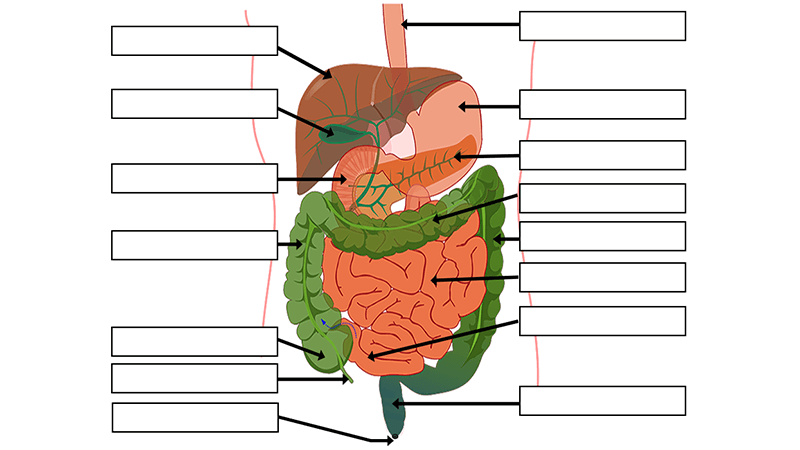
Label Digestive System
This worksheet was designed for anatomy students to practice labeling the organs of the digestive system. It is a little more advanced than what is typically seen in health or basic biology classes because it includes the three sections of the small intestine (duodenum, jejunum, ileum) and the three sections of the colon. (Note: I…
-
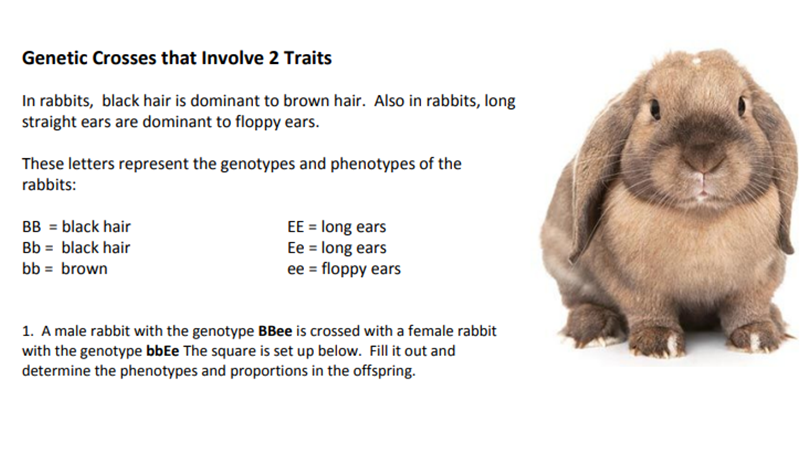
Genetics – Lop Ears
This worksheet allows students to practice doing genetic crosses that involve two traits. The first problem has the 4×4 Punnet square already set up. Once they fill out the square, they determine how many of the bunnies have floppy or long ears, and how many have black or pink noses. Note, these genetic traits are…
-
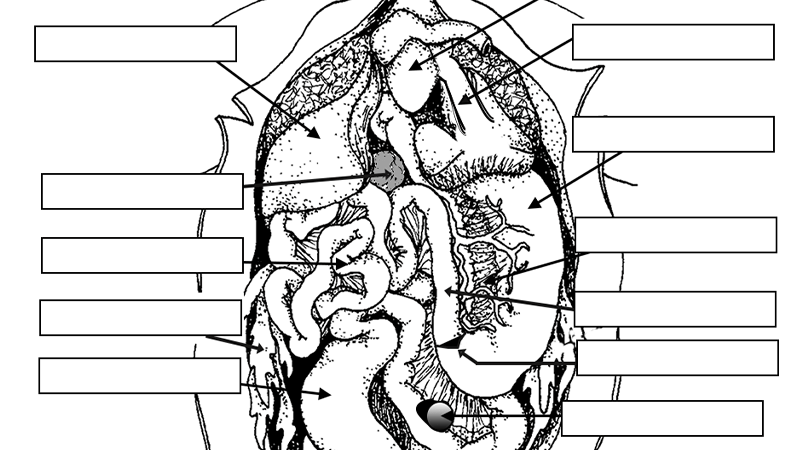
Frog Anatomy Label
This worksheet is a supplement to the frog dissection activity where students examine a preserved specimen. The main structures of the abdominal cavity are shown on this image and students practice identifying them using the included word bank. ( The worksheet could be modified to not include it should students need a greater challenge. )…
-
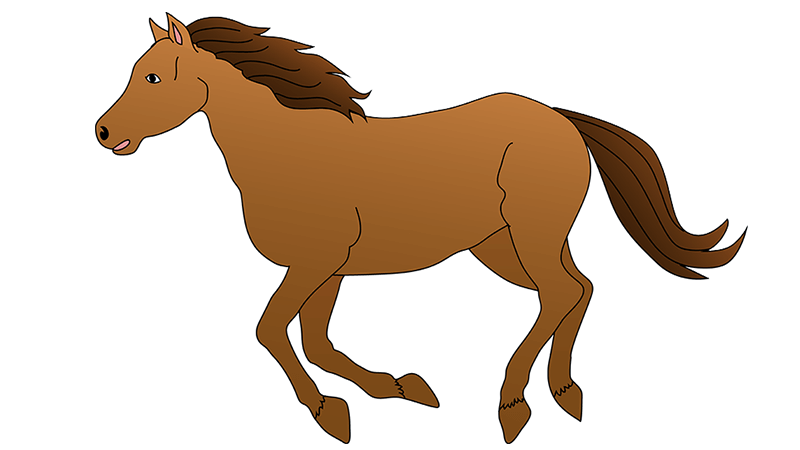
Horse Genetics
Practice genetic crosses with horse traits. The gait-keeper gene controls whether a horse will trot or pace and the flaxen gene determines mane color.
-
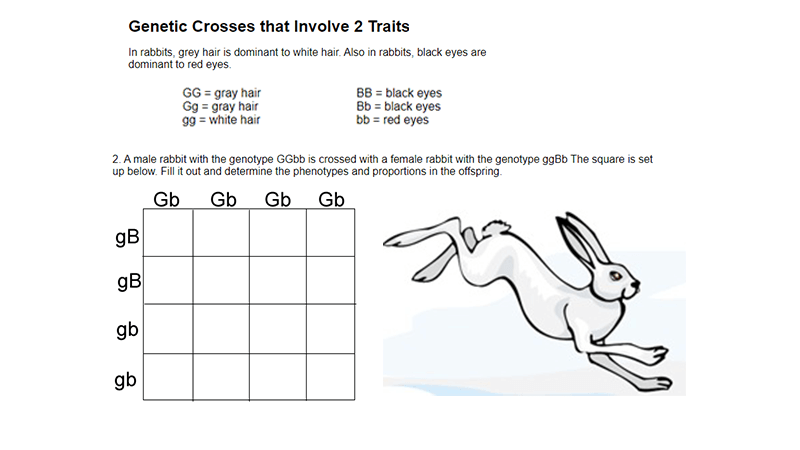
Genetic Crosses – 2 Traits
This worksheet was designed for freshman learning dihybrid crosses. Students struggle with setting up Punnet squares, so the squares are set up for them at first. Students only need to fill in the letters of the genotype can determine the phenotype proportions. A final task requires students to set up their own 4×4 square when…
-
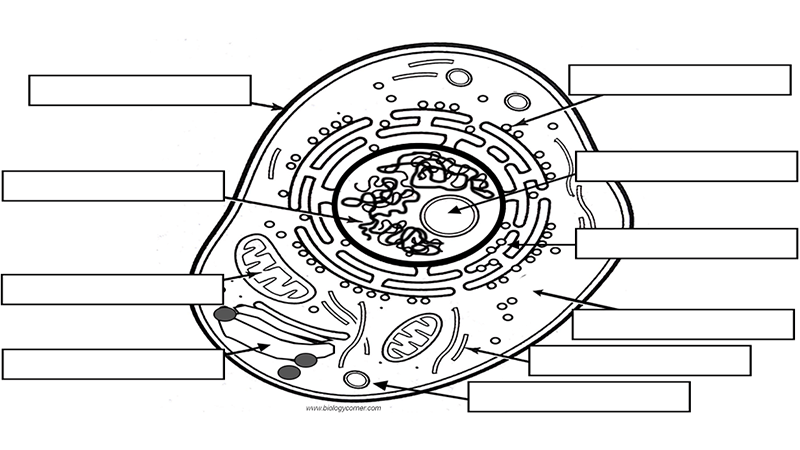
Reinforcement: Cell
This is a practice worksheet for students who are learning structures found in the cell. A list of terms can be matched with descriptions and definitions. The same terms can be used to label a diagram of an animal cell. I use reinforcement worksheets for review or remediation. I will give students 10 minutes to…
-
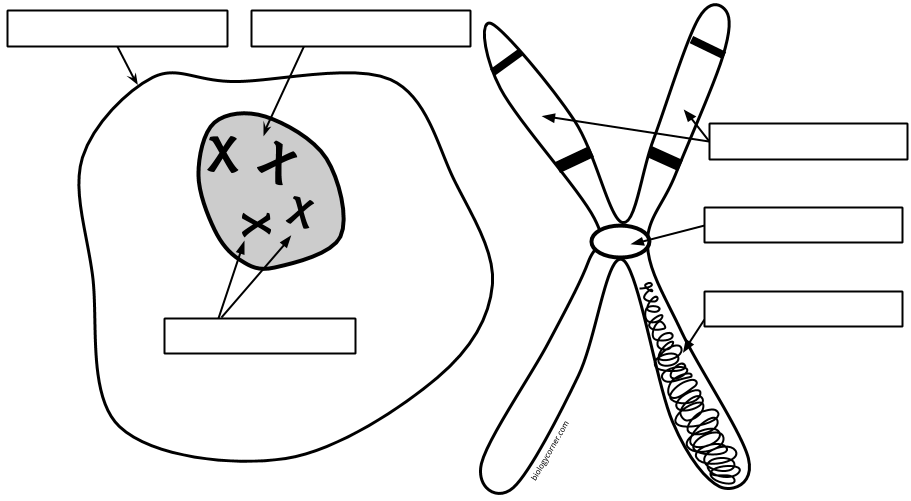
Simple Diagram Labeling on the Parts of a Chromosome
A diagram of a chromosome in the nucleus of the cell. Students label the chromatid, centromere, chromosomes, cell membrane, DNA, and nucleus.
-

Label and Color the Urinary System
This simple worksheet asks students to label the major structures of the urinary system. They can also choose to color the diagram. I use coloring sheets in anatomy and physiology classes but this could also be used in biology or as a supplemental graphic for a frog or fetal pig dissection. Though many of my…
-
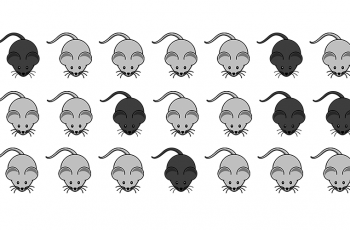
Hardy Weinberg Problemset
Hardy-Weinberg equilibrium (HWE) is a fundamental concept in population genetics that describes the theoretical relationship between allele frequencies and genotype frequencies in an ideal, non-evolving population. Students can practice using the Hardy Weinberg equilibrium equation to determine the allele frequencies in a population. This set of 10 questions gives students just enough information to solve…
-
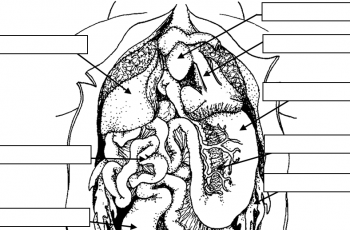
Frog Anatomy Label
This worksheet is intended to help students review the anatomy of the frog after they have completed the dissection of the frog. Images show the internal anatomy of the frog with blanks for students to fill in the names of structures, like the liver, intestine, lungs, spleen, and heart. Guide also compares the male and…
-
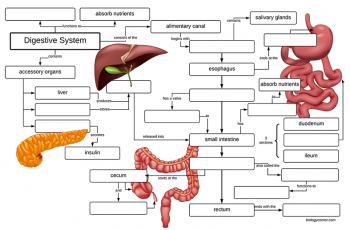
Digestive Concept Map
Students use this concept map to reinforce their understanding of the digestive system and how structures within that system are related. The mouth is where food is chewed and mixed with saliva. Saliva contains enzymes that start to break down food. The esophagus is a muscular tube that connects the mouth to the stomach. The…
-
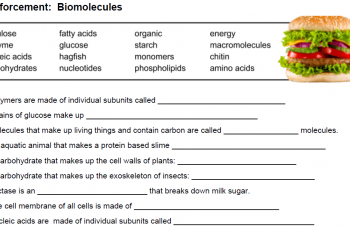
Reinforcement: Biomolecules
This worksheet is used with a unit on biological molecules in an introductory biology class. Students match definitions or descriptions to words provided in a word bank. The anchoring phenomenon in this unit is hagfish slime, which explains the inclusion of this concept in the list. Google Slides and Student Notes for the unit are…
-
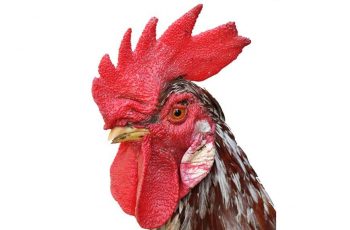
Genetics of Chicken Combs
The combs of chickens are controlled by four alleles, which interact to produce four distinct phenotypes: single, rose, pea, and walnut. In this exercise, students predict the outcomes of chicken crosses. Ideally, students should already know how to do crosses that involve two traits, the mechanisms for solving these problems are similar. My honors biology…
-
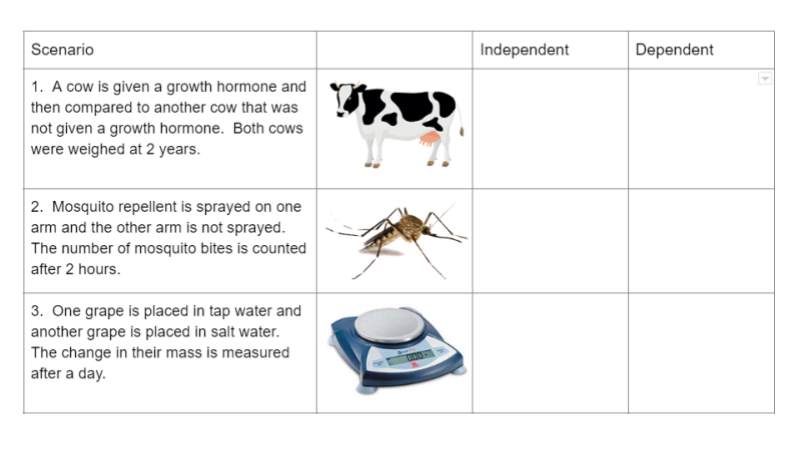
Independent & Dependent Variables Practice
Students reach short scenarios about scientific experiments. They identify the controls and variables in each story.
-

Reinforcement: Scientific Processes
I designed this worksheet for an introductory biology class. It reinforces concepts that are introduced in the first chapter. Students learn about how science works, what a hypothesis is, and how data is analyzed. Reinforcement worksheets have definitions or sentences that include a key word and students much choose from a bank of vocabulary words…

